The Rayonier team welcomed biologists to build a protective cave gate and collect data in an important bat habitat found in one of Rayonier’s Mississippi forests.
When an important bat habitat was found in one of Rayonier’s Mississipi forests, Timber Marketing Manager Adam DeYoung worked with a team of wildlife experts to protect the cave.
Mississippi’s Bat Caves
Mississippi has 15 documented bat species and about 65 known caves. Not all bat species use caves, and only a few of Mississippi’s caves are known to be used by bats. These caves have important geological features and provide important habitat for bat and amphibian species with conservation needs.
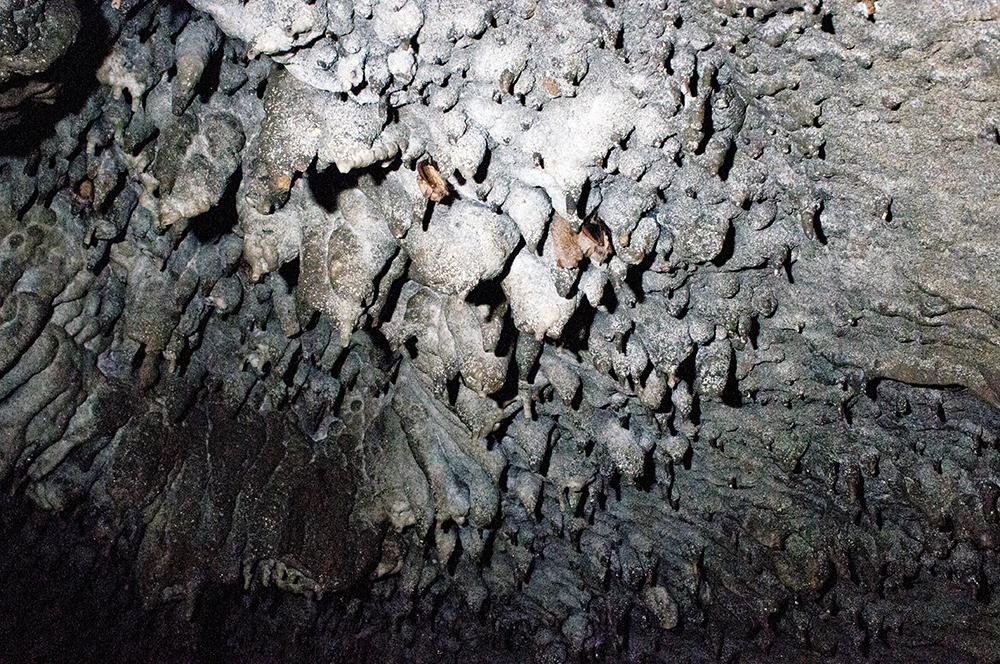
“Some of the animals that use these caves include southeastern myotis, little brown bats, gray bats, northern long-eared bats, Indiana bats, tri-colored bats, cave salamanders, and spring salamanders,” says Robert Smith, a wildlife biologist, forester and the coastal program coordinator for Wildlife Mississippi. “Several of these species are protected or petitioned to be protected at the state or federal level because of their apparent population declines.”
The bat cave on Rayonier land, known as Eucutta Cave, is in Wayne County, Mississippi. Tucked away behind many acres of pine plantation down a little hardwood slope is a small hole in the side of a hill. Eucutta Cave’s understated entrance is in a limestone outcrop of a geologic formation called the Vicksburg Group. It stretches a little over 100 yards back into the limestone depths with some stalactites, flowstone, and other cave formations, along with an underground stream, creating great habitats—and sometimes difficult access conditions.
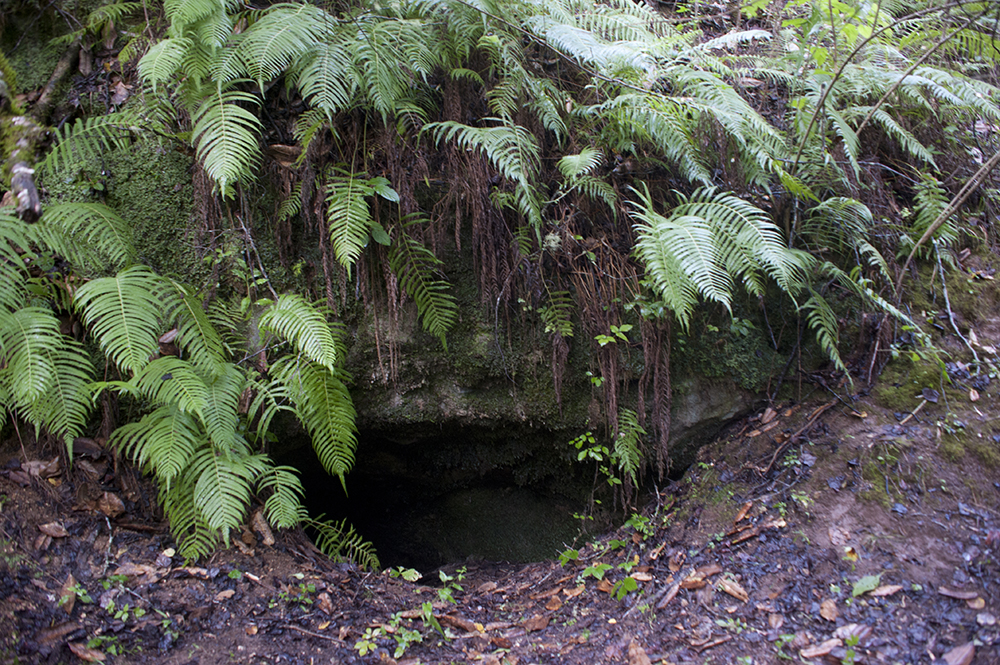
Adam says the cave is located in a specially-protected Streamside Management Zone, or SMZ, because it is near a waterway. In these buffer zones, which exist all over Rayonier’s ownership, no forestry activities take place to ensure sedimentation doesn’t impact the water.
Monitoring Mississippi’s Bat Population
Biologists with the Mississippi Museum of Natural Science; Mississippi Department of Wildlife, Fisheries, and Parks; and other members of the Mississippi Bat Working Group survey caves and other bat habitats to track bat numbers and habitat conditions. Repeated trips to Eucutta Cave show steady bat and salamander use.
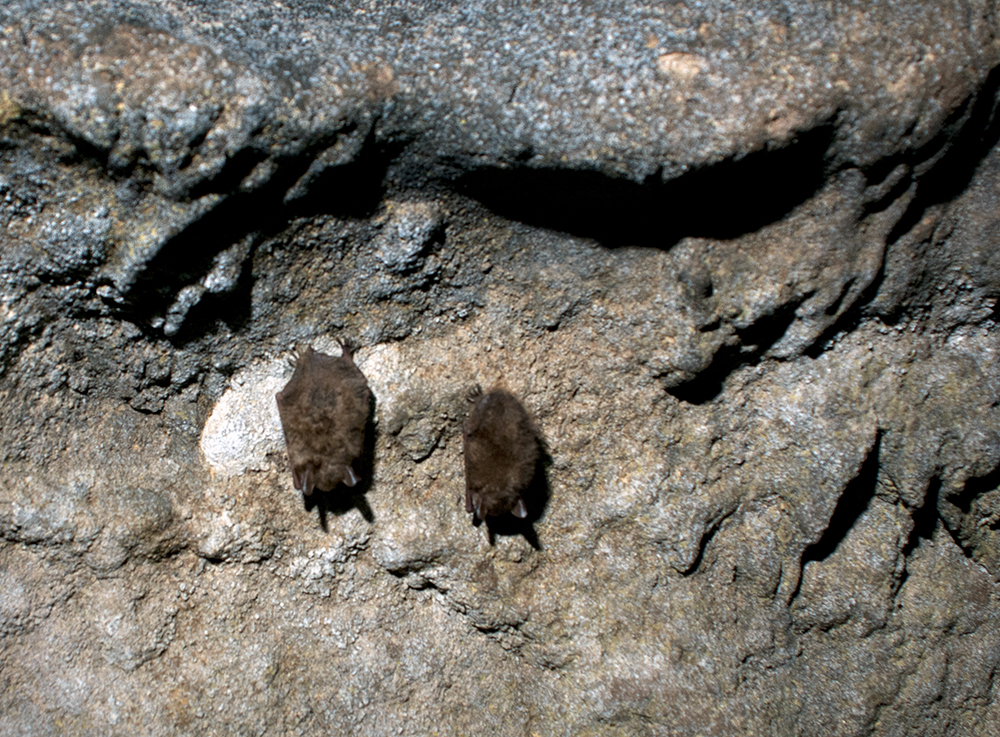
“Many people don’t think about bats being migratory or seasonal users, but different bat species use the caves at different times of the year,” explains Robert. “Wintering bats use colder areas in the cave to reduce their metabolic rate, giving them higher survival when there is low prey availability. Summer maternal colonies choose warmer areas since bat pups do not readily thermoregulate and prey availability is high.”
He says Eucutta Cave serves bats in both seasons.
“It’s a major winter bat roost, with about 50 to 150 southeastern bats and 750 tri-colored bats. In the summer, Eucutta Cave hosts a maternal colony of about 300 southeastern bats.”
Protecting Bats from Two Major Threats
There are two main threats to bats in Eucutta Cave: disturbance by humans and infection with white-nose syndrome.
The threat humans pose to bats
Some of the human disturbances observed in Mississippi caves include littering, graffiti, fires and smoke; throwing clumps of mud (presumably at roosting bats); and accidentally flushing mothers with young bat pups. Repeated disturbance of bats can cause them to abandon a roost. If a mother bat drops her pup, especially in an underground stream, the pup might not survive.
While the Rayonier property that houses the cave is in a very remote location, Adam says he often found signs of human vandalism at the site before efforts were made to protect it.
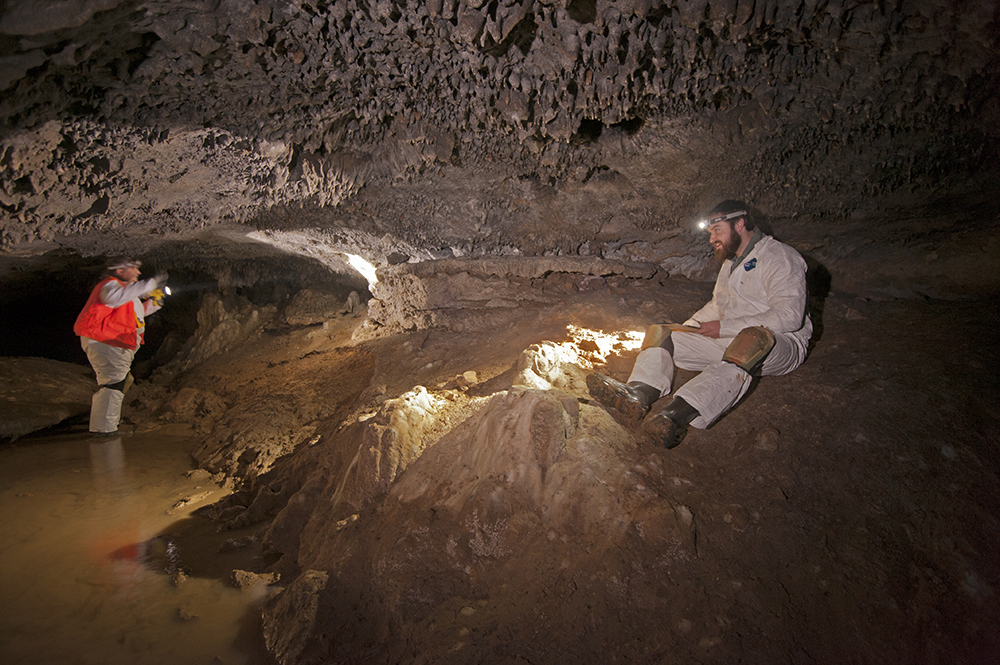
The threat of white nose syndrome
White-nose syndrome is a disease in bats which has resulted in the dramatic decrease in the bat population of the United States and Canada. This infection is caused by the fungi Pseudogymnoascus destructans. It was accidentally brought into the United States from Eurasia and was first documented in 2006. By 2011, up to 6.7 million bats had died from the disease. Infected bats have been found in 36 states. Mississippi is one of the few states that has tested positive for the fungi but has not had a positive case of the syndrome.
The Mississippi Bat Working Group started monitoring for white-nose syndrome in 2013. To date, Eucutta Cave has not tested positive for the fungus, but other caves within Wayne County have.
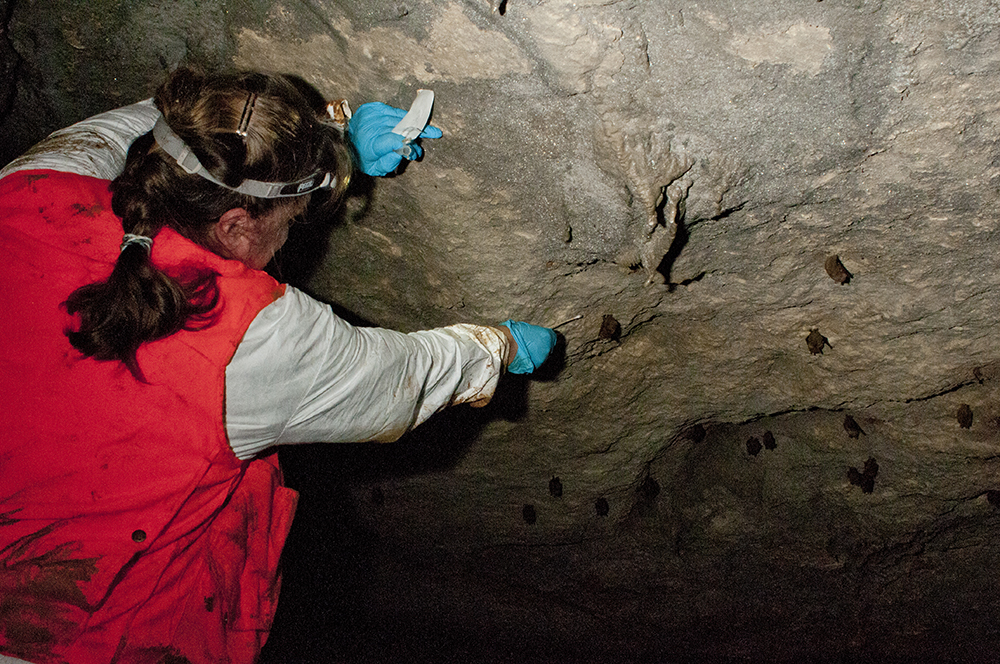
The fungi that cause white-nose syndrome may be transferred from bat to bat, or bats may pick it up from the ground. Humans can also carry spores from cave to cave on spelunking gear. Controlling access to the cave with a gate can help reduce human disturbance and accidental transfer of white-nose syndrome spores.
Building the Right Gate To Protect a Bat Cave
The U.S. Fish and Wildlife Service’s Partners for Fish and Wildlife Program and Wildlife Mississippi provided most of the funding to install the cave gate at Eucutta Cave, with Rayioner providing additional support, as well as the Mississippi Department of Wildlife, Fisheries, and Parks, and other members of the Mississippi Bat Working Group.
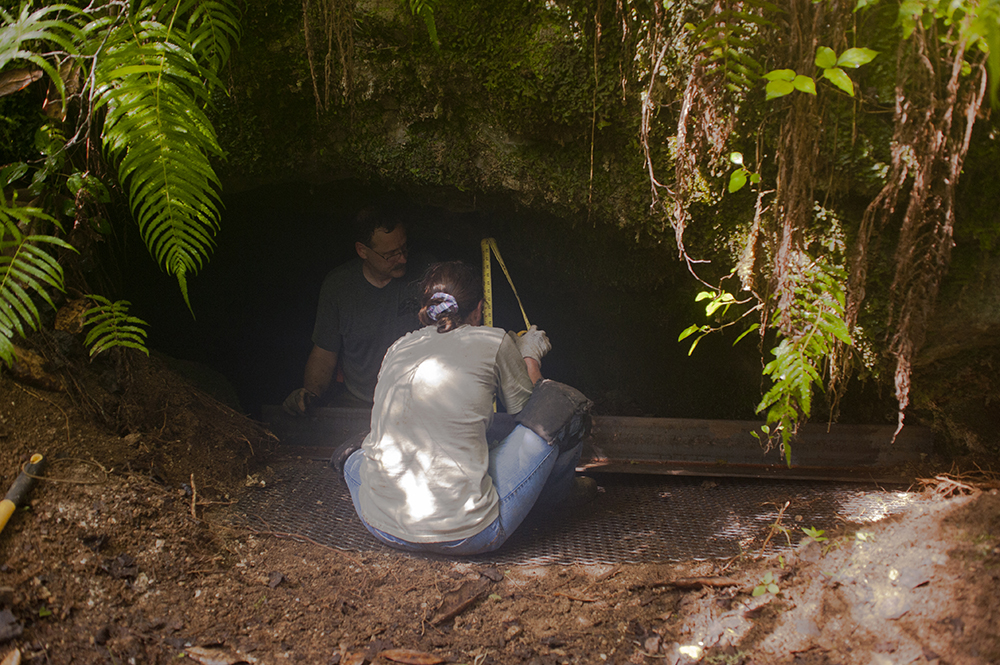
Gating a bat cave may sound simple, but cave gates that are really beneficial need to meet certain criteria:
- They have to be sturdy enough to protect the cave. The gate has to have bars close enough so that no one, including children, will get stuck in it, but the bars have to be wide enough to allow bats to fly though the openings.
- The gate has to function as a gate to let people in and out for valid reasons, such as bat monitoring and research.
- Air circulation through the gate is also important. If enough air doesn’t circulate through the gate, then the conditions inside the cave may change, resulting in less bat and amphibian use.
- The air flow also needs to be smooth without a lot of turbulence to enable the bats to fly through the gate openings cleanly and safely. Too much turbulence can result in bats hitting the gate and damaging their wings or dying.
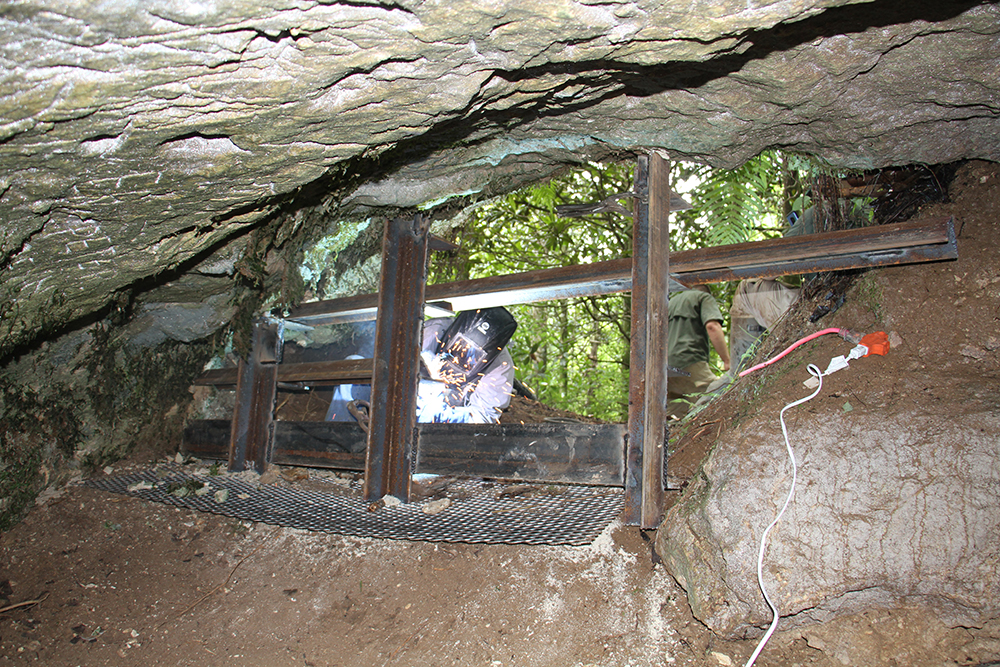
Who knew that designing a gate to enhance smooth air flow could be so important?
To minimize disturbance for bats using the cave, the cave gate would need to be installed after the bats born in summer could fly on their own but before winter bats began using the cave. Wildlife Mississippi hired an expert, Kristen Bobo and her team, who have designed cave gates across the United States, to handle the design and installation. Wildlife Mississippi also contracted with EcoRESTORE, Inc. for assistance in getting materials to the cave site and controlling invasive plant species around the general cave area.
The optimum time from a bat perspective to transport almost a ton of steel and another half ton of equipment through deep sands and down steep hills for cutting and welding is late August. Over three long days in late August 2019, a team of almost a dozen biologists and land managers transported materials to a staging area, and the cave gate was fabricated and installed.
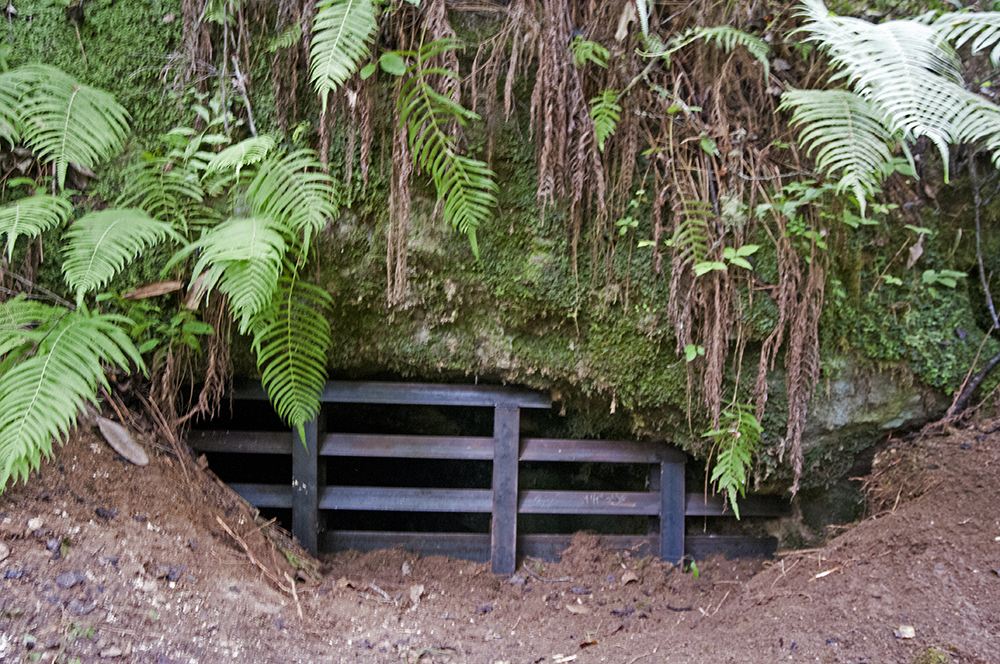
Adam, the Rayonier employee, says he’s very happy with the project.
“Wildlife Mississippi and their contractors were a pleasure to work with and treated Rayonier’s land with the utmost respect and care during the whole installation process,” he says. “This project was a great demonstration of Rayonier identifying a unique and significant site and working in cooperation with wildlife groups to ensure its protection for years to come.”
A Leader in Protecting Bats
Sadly, one of Mississippi’s biggest bat proponents, and arguably the biologist who got Wildlife Mississippi involved in this project, Kathy Shelton was not present when this gate was completed, as she unexpectedly passed away a month earlier.
“Without Kathy’s leadership and coordination from within the Mississippi Department of Wildlife, Fisheries, and Parks, this project likely would not have been completed,” Robert says. “Kathy was an advocate for bats and other less charismatic species of Mississippi. Without Kathy, we would not have known half of what we know about bats of Mississippi.”
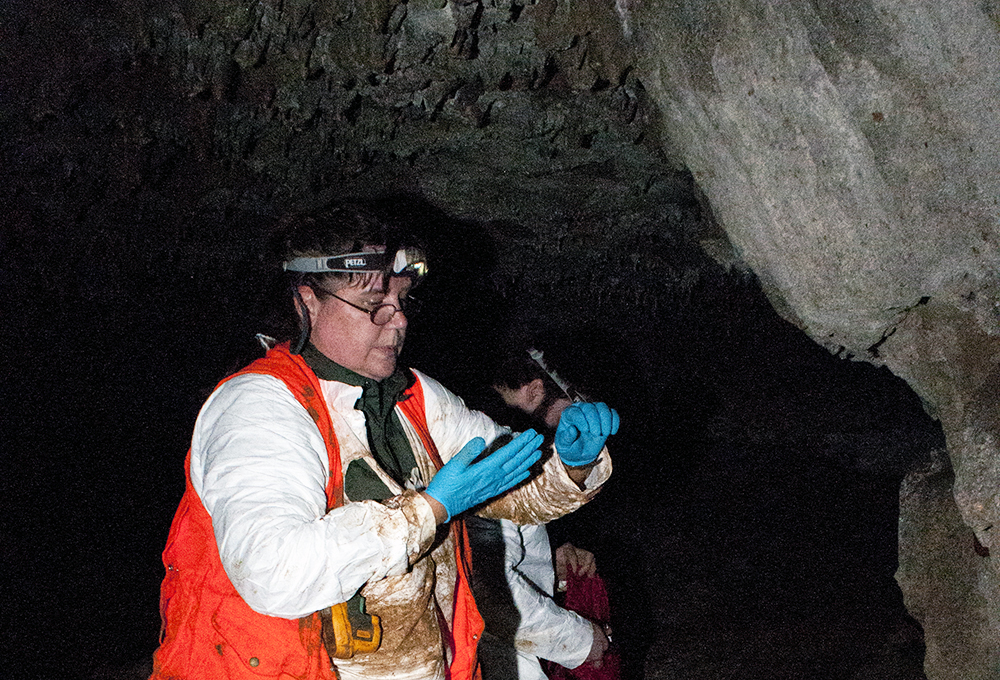
He said gating Eucutta Cave to conserve natural resources and ensure that Mississippi has appropriate bat habitat was the result of landowners willing to be good stewards, a cadre of caring wildlife biologists, and a federal program providing landowner assistance. Some other caves that have been gated in the past have had significant increases in bat populations; hopefully, the numbers of bats using Eucutta Cave will increase with this protection from disturbance too.
This article was shared with permission from Wildlife Mississippi. Wildlife Mississippi is a private, non-profit conservation organization dedicated to conserving, restoring, and enhancing fish, wildlife, and plant habitat throughout Mississippi. The conservation of Mississippi’s lands, waters, and natural heritage will secure the state’s quality of life by making it a better place to live, work, and raise a family while sustaining a clean environment and a healthy economy.
All photos by Wildlife Mississippi’s Robert Smith.



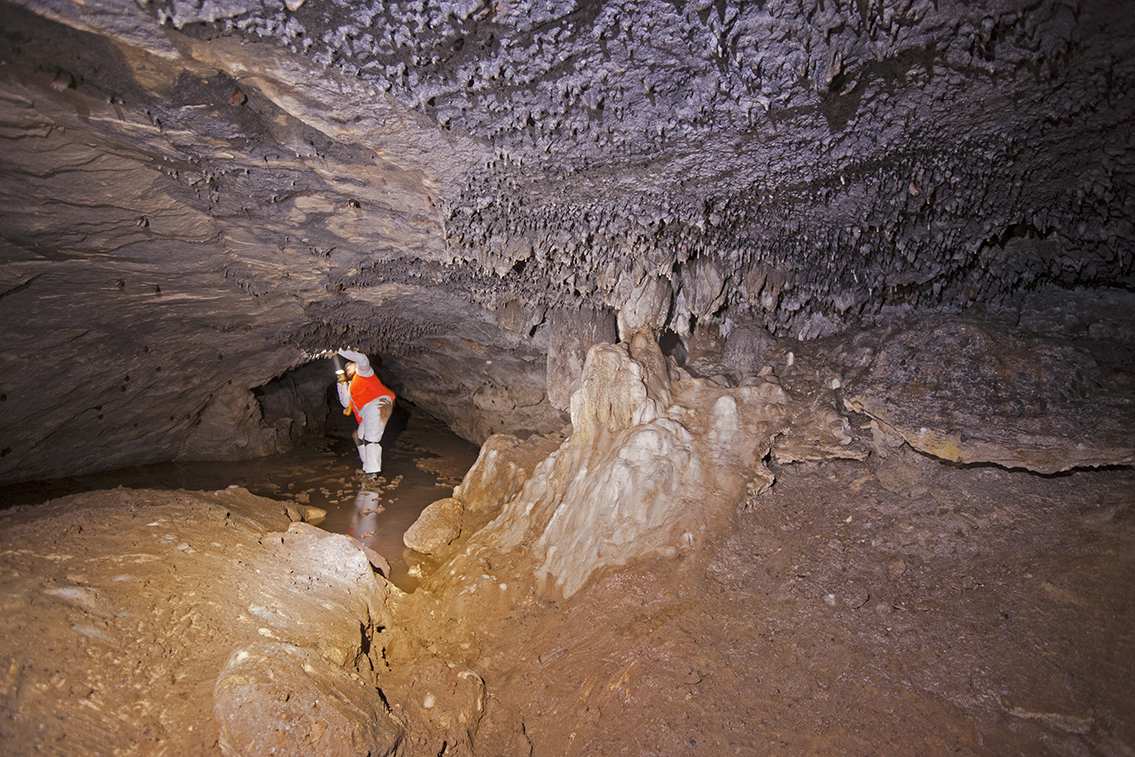


Leave a Comment